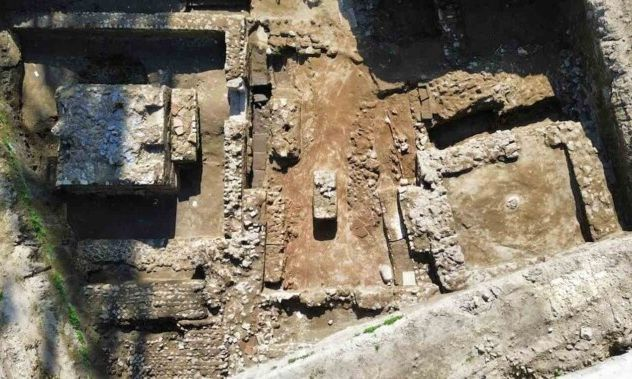In a recent archaeological excavation near Moodbidri in Dakshina Kannada, India, a remarkable discovery has stirred excitement among historians and archaeologists. Unique terracotta figurines, in various states of preservation and accompanied by bone and iron pieces, were unearthed at the megalithic dolmen site of Mudu Konaje. These ancient artifacts provide a rare glimpse into the rich cultural heritage of coastal Karnataka and are believed to date back to the period between 800-700 B.C.
The discovery of these terracotta figurines is credited to the diligent efforts of historian T. Murugeshi, a retired Associate Professor from the Department of Ancient History and Archaeology at Mulki Sunder Ram Shetty College, Shirva, in Udupi district. According to Mr. Murugeshi, these figurines are of great significance, shedding light on the Bhoota cult, or Daiva Aradhane, a religious and cultural phenomenon of coastal Karnataka.
Among the eight figurines found at Mudu Konaje, two depict cow bovines, one represents a mother goddess, two are peacocks, one is a horse, another is the hand of a mother goddess, and the final one remains an enigmatic object yet to be fully deciphered.
The megalithic site at Mudu Konaje was originally discovered and reported by historian and researcher Pundikai Ganapayya Bhat in the 1980s. Situated approximately 8 kilometers from Moodbidri along the Moodbidri-Shirthady Road, this site once boasted nine dolmens on the slope of a stone hill. However, only two dolmens remain intact, while the others have succumbed to the ravages of time.
The megalithic culture is distinguished by its diverse burial practices and the use of iron in ancient India, with dolmens being a notable example. Under a dolmen, massive stone slabs known as orthostats were arranged in a clockwise order to create a square chamber, which was then sealed with another substantial stone slab serving as a capstone. Typically, a round or U-shaped entrance, referred to as a port-hole, was fashioned on the eastern slab. These dolmens went by various names in South India, such as Kalmane, Pandavara Mane, Moriyara Mane, Moriyara Betta, Panara Arekallu, Madmal Gunda, Kandi Kone, Kottya, Toonth Kal, Pandavara Kal, and many others, attesting to their widespread presence among the populace.
The terracotta figurines discovered at Mudu Konaje within a megalithic context are an exceptional find in the Indian archaeological landscape. These figurines were situated inside the dolmens but had been previously disturbed by treasure hunters. Notably, the cow bovines found in these dolmens are pivotal in establishing the chronology of the dolmens themselves. Furthermore, these terracotta artifacts offer valuable insights into the Bhoota cult or Daiva Aradhane practices of coastal Karnataka, where the cow bovine, or cow goddess, finds intriguing parallels with megalithic terracotta figurines discovered in Malampuzha, Kerala, and even ancient Egypt. These specific terracotta figurines from Mudu Konaje are believed to date back to the period between 800-700 B.C.
One of the cow bovines discovered is a meticulously crafted figurine, standing approximately 9 cm in height and 5 cm in width. It exhibits a distinct bull's head atop a solid, handmade human body. Two breasts, attached using the applique method, confirm its feminine identity. Notably, a groove runs from below the right arm to the left side of the neck, while both arms are present but with broken hands. The left arm is oriented toward the front, and the figurine features a flattened, wide belly with a round section below it, suggestive of legs. A unique elongated round bun at the back of the head serves as headgear, adding to its enigmatic charm.
The second cow bovine figurine, measuring about 7.5 cm in height and 4 cm in width, is another finely crafted artifact. It boasts a bovine snout and distinct archetypal headgear. Applique ornamentation adorns the figurine around the neck and below the belly, while the base features a prop to help it stand upright.
Among the other figurines, two peacocks stand out. One is a solid peacock measuring approximately 11 cm in height and 7 cm in width, its feathers seemingly dipping towards the earth. The second peacock, however, is unique, with an elongated head designed to be inserted into a shallow body, which regrettably remains missing. Nevertheless, the feathers are meticulously designed to point upward.
Lastly, a mother goddess figurine, though lacking a head, hands, and legs, offers a tantalizing glimpse into the artistic craftsmanship of the time.
The discovery of these terracotta figurines at Mudu Konaje has not only added to our understanding of megalithic cultures in India but has also opened a window into the spiritual and cultural practices of coastal Karnataka. These ancient artifacts serve as a bridge connecting us to a bygone era where art, religion, and society intertwined in intriguing ways. As further research and analysis unfold, we can expect more revelations about the Bhoota cult and Daiva Aradhane, shedding light on the mysteries of ancient coastal Karnataka.







